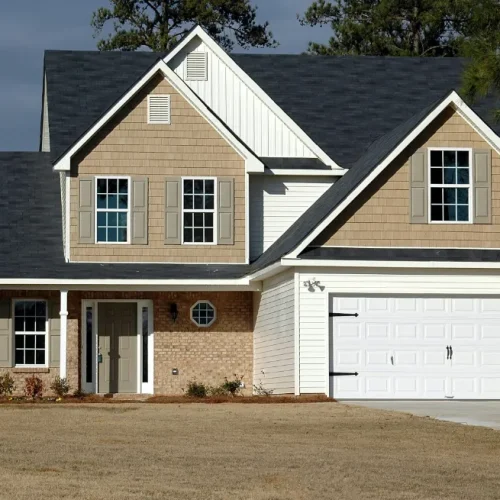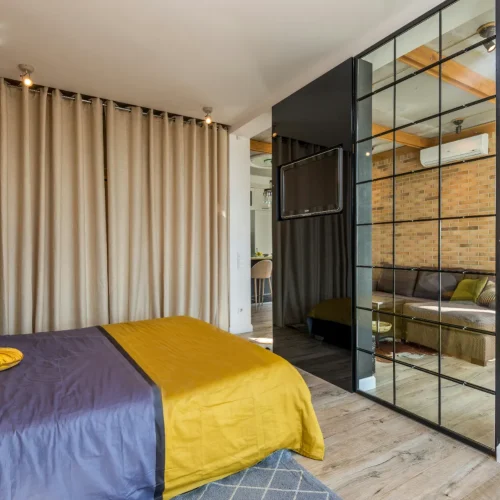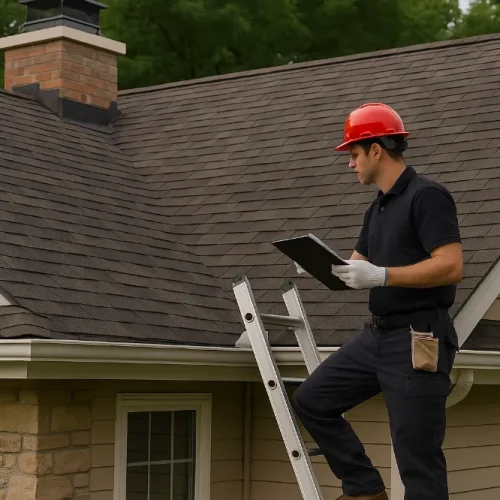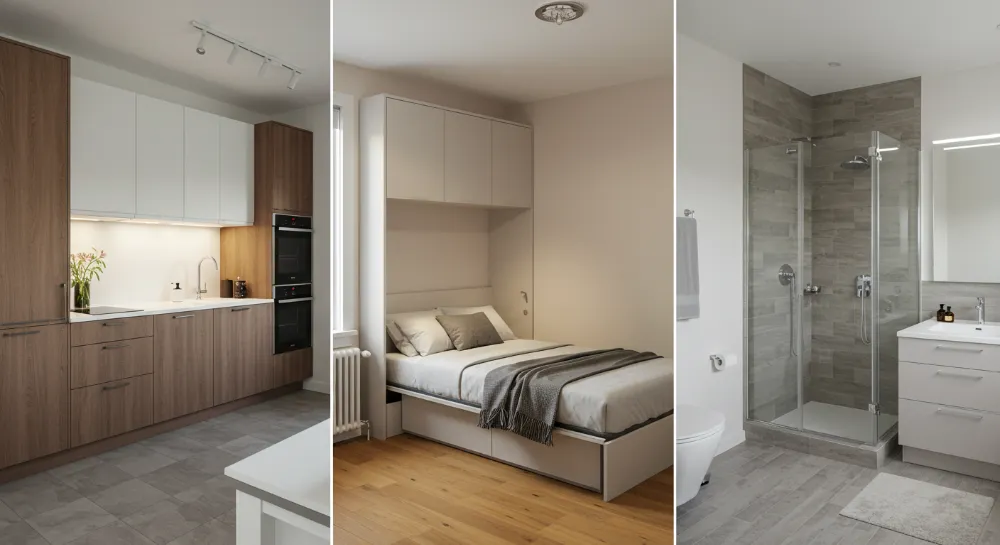
Renovation order sets the tone for everything that follows, budget flow, daily life, and even how long takeout becomes dinner. Kitchens anchor gatherings, bathrooms run the routine, and bedrooms steady the mind. Each space brings its own math and its own friction.
This guide covers:
- How to weigh cost, ROI, and disruption without leaning on guesses
- What real estate pros highlight, and where homeowners experience disagreement
- Pros, cons, and recurring mistakes across the kitchen, bathroom, and bedroom work
- Practical ways to match project order to household patterns
Lists like this can look tidy, though projects themselves rarely behave. Some start simple and grow legs; others finish early for reasons no one can fully explain. Strange, right?
How to Decide Which Room to Remodel First
Picking a starting room shapes budget, timing, and momentum. A big swing at the start can boost value fast, or stall everything if delays stack up. Smaller first steps build confidence, though they might not move resale much. The decision usually turns on goals and how each space is used day to day.
Key Factors to Consider
Before racing into bullets, consider the backdrop: material costs move, contractor availability changes by season, and codes can nudge scope midstream. With that in mind:
- Cost and Budget Impact: Kitchens trend highest, bathrooms follow, bedrooms trail. Materials, labor, and a cushion for surprises all matter.
- Return on Investment (ROI): Kitchens and bathrooms tend to pull stronger resale gains than bedrooms, according to industry reports.
- Disruption to Daily Life: Kitchen work interrupts meals and gatherings; bathroom work hits routines hardest in single-bath homes; bedroom work is easier to live through.
- Family and Lifestyle Needs: The most-used space often returns the most comfort per dollar spent.
- Urgency of Repairs or Upgrades: Safety and system issues, plumbing, electrical, ventilation, jump the line.
Even these “rules” bend. A small condo with one bath might treat that room as mission-critical, no matter the spreadsheet.
Expert and Homeowner Insights
Real estate voices lean kitchen-first for impact, while many households prefer a smaller win to build traction. Living with the space for a bit can reveal odd friction points, poor lighting in the bedroom, a bottleneck near the fridge, or a shower that never drains right. Market logic favors value-heavy rooms; daily life sometimes votes the other way.
Kitchen Remodel: When to Prioritize the Heart of the Home
Kitchens carry weight. This is where meals, homework, and holiday traffic collide. A thoughtful redesign can change how a home feels from morning to night. Yet the same scope that brings impact can crowd budgets and calendars.
Pros and Cons of Remodeling the Kitchen First
Before listing benefits, a caveat: appliance lead times and custom cabinets can skew the plan even when bids look firm.
- Pros: High ROI (about 60–80%), freshens the home’s core, boosts function, and pulls buyer attention.
- Cons: Highest price tier ($20,000–$50,000+), heavy disruption, and the need to arrange temporary meal plans.
And here’s the catch—pricing that looked stable two months ago might not hold by install day if suppliers change stock or freight costs jump. Appliance choices can also impact timelines and energy efficiency; eco-conscious renovators sometimes consider options like a solar-powered refrigerator to reduce long-term utility costs, although upfront investment and installation requirements vary.
Kitchen Remodel Mistakes to Avoid
Even well-run kitchen remodel projects trip over avoidable issues. A few patterns pop up again and again:
- Permanent Decisions: Rushed layouts or cabinetry choices can lock in daily annoyances and raise change-order costs.
- Budget Pitfalls: Shrinking the allowance for labor or ventilation can backfire later with rework.
- Timing Issues: Choosing peak family periods for demo adds stress; off-peak windows tend to go smoother.
Some swear a phased approach fixes everything. Others say phasing extends the mess. The truth sits somewhere in the middle, shaped by scope and crew coordination.
Bathroom Remodel: Upgrading for Comfort and Function
Bathrooms keep the household on schedule. A sensible refresh improves comfort right away and can lift appraisal figures as well. But plumbing behind walls can rewrite the plan without warning; older valves and venting don’t always play nice with new fixtures.
Pros and Cons of Remodeling the Bathroom First
Context matters here, too: a one-bath home lives this disruption far differently than a three-bath layout.
- Pros: Lower spend compared with kitchens ($10,000–$30,000), solid ROI (about 60–70%), and daily comfort gains.
- Cons: Disruption spikes in single-bath homes; moving drains or reworking shower lines can push costs up.
Prices move with tile and fixture choices, and small selections, like a niche or glass style, can nudge timelines more than expected.
Bathroom Remodel Mistakes to Avoid
What looks like a simple refresh can reveal old issues that need fixing to pass inspection.
- Plumbing Issues: Skipping upgrades around valves, traps, or venting risks leaks and hidden damage.
- Timeline Problems: Fixture backorders or custom glass can stretch dates by weeks.
- Access Problems: No backup bath? A short-term plan for showering and handwashing is not optional.
Plenty point to waterproofing as the quiet hero; when it’s weak, every finish suffers.
Bedroom Remodel: Creating a Restful Retreat
Bedrooms rarely swing appraisals the way kitchens do, yet they carry outsized influence on sleep and stress. Better lighting, calmer finishes, and smarter storage change how a day starts and ends. Space-saving choices can help small rooms feel larger. Mid-scale additions, such as cabinet beds, free up floor area for desks or dressers without committing to built-ins.
Pros and Cons of Remodeling the Bedroom First
On paper, this looks like an easy win, though décor choices can eat budget fast if scope creeps.
- Pros: Least disruptive, modest spend ($10,000–$20,000), and friendly to phased work.
- Cons: ROI trails kitchens and baths (about 40–60%), and highly personal styles may narrow buyer appeal later.
For households craving calmer nights right now, comfort sometimes outweighs resale math, and that tension rarely resolves neatly.
Bedroom Remodel Mistakes to Avoid
Looks matter, but daily function pulls more weight than most expect.
- Over-Prioritizing Aesthetics: Eye-catching choices that ignore traffic flow or outlet placement wear thin.
- Neglecting Function: Storage, blackout strategies, and layered lighting carry long-term value.
The best bedroom upgrades tend to vanish into the background until they’re gone.
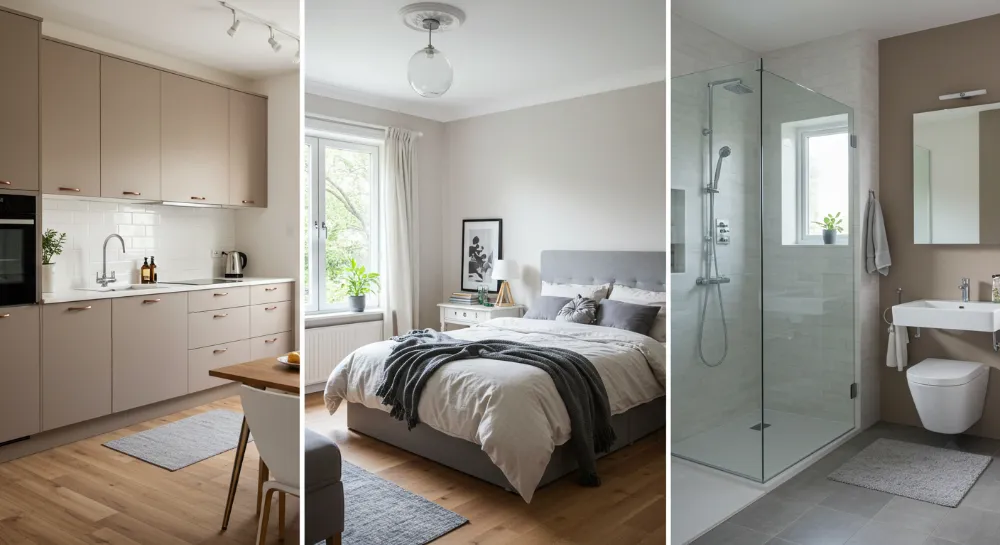
Comparing ROI, Cost, and Disruption: Kitchen vs Bathroom vs Bedroom
Side-by-side comparisons help, though they can hide the spread between basic and premium finishes. Two homes with the same “average” still pay very different invoices depending on layout, age, and local labor trends.
| Room | Avg. Cost | Avg. ROI | Disruption Level | Typical Timeline |
| Kitchen | $20k–$50k+ | 60–80% | High | 6–12 weeks |
| Bathroom | $10k–$30k | 60–70% | Moderate | 3–6 weeks |
| Bedroom | $10k–$20k | 40–60% | Low | 2–4 weeks |
If these ranges feel too tidy, they are. Regional labor rates, lead times, and code updates can shove a “moderate” into “major” fast. Timelines also compress when crews overlap well, or stretch when one trade slips.
Choosing the Right Order for Your Situation
There isn’t a single correct order; there’s a better order for a given home, budget, and time of year. A resale-focused plan rarely looks the same as a comfort-first plan.
For Resale Value
If a sale is on the horizon, kitchens and bathrooms tend to move the needle with buyers. Fresh surfaces and reliable systems calm inspection jitters.
For Family Comfort
Households with kids or frequent guests lean kitchen-first for workflow and seating, while those craving a calmer headspace might anchor on the bedroom.
For Budget Constraints
With a tighter budget, a bedroom refresh or modest bath update delivers visible change without over-committing funds.
For Minimal Disruption
Bedroom work brings the lightest footprint. Those juggling school, work, or caregiving may value that lower chaos level most.
Several of these goals collide. Value-minded plans can still start small if timing or cash flow says so. Does anyone actually stick to the same plan after the first walkthrough?
Common Mistakes and How to Avoid Them
Project drift happens less from big decisions than from tiny ones that stack up. The patterns repeat across homes and zip codes.
- Underestimating Costs: A contingency matters because hidden issues don’t announce themselves early.
- Ignoring Ventilation: Especially in bathrooms and kitchens, weak airflow invites moisture problems.
- Over-Personalizing: Bold, niche choices can pinch resale and tire out daily use.
- Skipping Permits: Work must meet local codes to avoid fines, delays, and redo orders.
Some argue that permits slow things down. Inspectors also catch problems early; time lost now can be time saved later.
Pro Tips for a Smooth Remodel
Advice piles up fast; a short list carries far.
- Plan for Contingencies: Extra time and money blunt the shock of supply hiccups and wall surprises.
- Set a Realistic Budget: Include materials, labor, permits, and a buffer for swings.
- Hire Reputable Contractors: References, clear scopes, and written timelines reduce guesswork.
- Communicate Clearly: Regular check-ins prevent tiny issues from turning into change orders.
- Live Elsewhere if Needed: For full-gut kitchens or baths, a short relocation can lower stress.
Some projects run on handshake trust and go fine; others need strict scopes. The safer bet is documented expectations.
FAQs
Kitchens and bathrooms usually lead the ROI rankings in industry reports, while bedrooms influence daily comfort more than price. In slower markets, bathrooms sometimes outshine kitchens because smaller scopes finish faster and show well in photos, which tilts buyer sentiment for a short window.
Structural and system fixes come before finishes. After that, kitchens and baths take center stage, with bedrooms and living areas following. That said, seasonal labor swings or a backlog on key fixtures can shuffle the order in ways no checklist predicts.
Value-minded plans lean kitchen-first, though a dated or failing bathroom can override the math. When listings in a given area already show modern kitchens, a well-timed bath refresh might stand out more, at least until the next inventory cycle resets expectations.
Match budget, household routines, and the most urgent pain points. If a single bath struggles to function, that priority rises. When entertaining drives use, the kitchen climbs the list. Market data helps, yet real-time quotes and scheduling often end up deciding.


